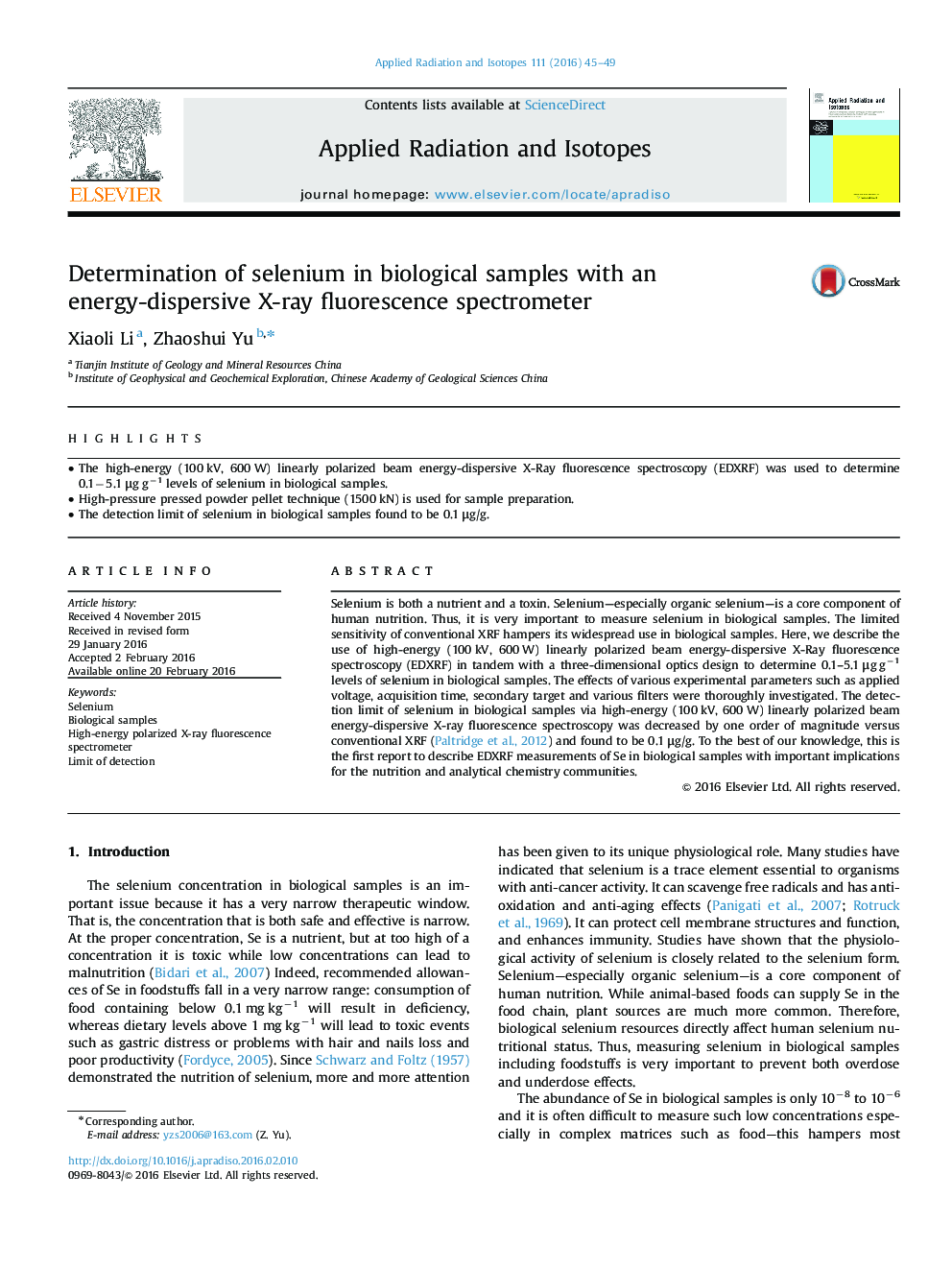| Article ID | Journal | Published Year | Pages | File Type |
|---|---|---|---|---|
| 1875747 | Applied Radiation and Isotopes | 2016 | 5 Pages |
•The high-energy (100 kV, 600 W) linearly polarized beam energy-dispersive X-Ray fluorescence spectroscopy (EDXRF) was used to determine 0.1−5.1 μg g−1 levels of selenium in biological samples.•High-pressure pressed powder pellet technique (1500 kN) is used for sample preparation.•The detection limit of selenium in biological samples found to be 0.1 μg/g.
Selenium is both a nutrient and a toxin. Selenium—especially organic selenium—is a core component of human nutrition. Thus, it is very important to measure selenium in biological samples. The limited sensitivity of conventional XRF hampers its widespread use in biological samples. Here, we describe the use of high-energy (100 kV, 600 W) linearly polarized beam energy-dispersive X-Ray fluorescence spectroscopy (EDXRF) in tandem with a three-dimensional optics design to determine 0.1–5.1 μg g−1 levels of selenium in biological samples. The effects of various experimental parameters such as applied voltage, acquisition time, secondary target and various filters were thoroughly investigated. The detection limit of selenium in biological samples via high-energy (100 kV, 600 W) linearly polarized beam energy-dispersive X-ray fluorescence spectroscopy was decreased by one order of magnitude versus conventional XRF (Paltridge et al., 2012) and found to be 0.1 μg/g. To the best of our knowledge, this is the first report to describe EDXRF measurements of Se in biological samples with important implications for the nutrition and analytical chemistry communities.
